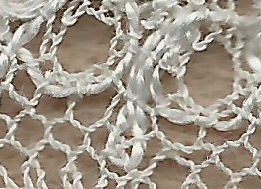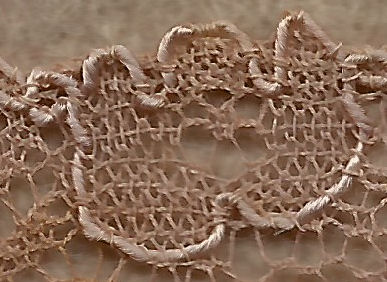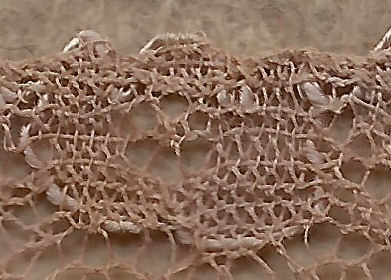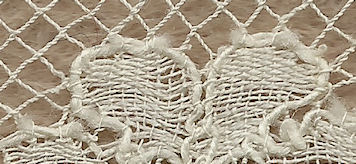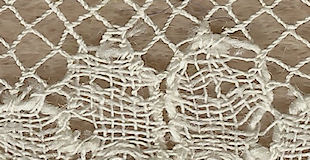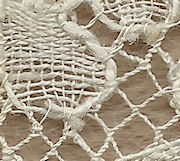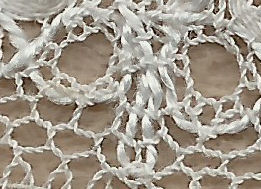
Gimps are used in Bucks Point lace, and other styles as well. A gimp is a thicker thread than the rest of the threads. It is used to outline patterns. The cross-twist system of describing bobbin lace stitches cannot be used for gimps, as there is a pair and the gimp thread (making three) rather than two pairs. Click here for a description of how gimps are worked, with an animation.
Gimps are different to the rest of bobbin lace for two reasons. Usually bobbin lace is made of threads of the same thickness, but a gimp is much thicker than the other threads. Also, bobbin lace is worked in pairs, but a gimp is a single thread. However, gimps are like the rest of bobbin lace in that they are worked at the same time as the rest of the lace. The way of working them means that both sides of the lace look exactly the same - see left and right.
Click here for the whole piece of lace.
